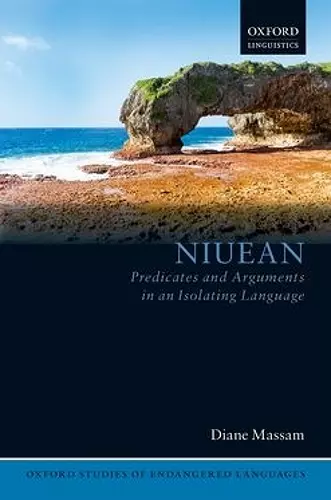Niuean
Predicates and Arguments in an Isolating Language
Format:Hardback
Publisher:Oxford University Press
Published:9th Apr '20
Currently unavailable, and unfortunately no date known when it will be back

This volume explores the grammar of Niuean, an endangered Polynesian language spoken on the island of Niue and in New Zealand, with a focus on the issue of predication. Since Aristotle, it has been claimed that a sentence consists of a subject and a predicate. Niuean constitutes the perfect testing ground for this claim: it displays verb-subject-object word order, in which the subject interrupts the predicate, and has an ergative case system, in which subjects are not clearly distinguished from objects in their marking for grammatical case. Diane Massam uses the framework of generative grammar to carry out a detailed analysis of the internal structure of Niuean predicates and arguments, as well as the relations between them, touching on many other topics including the nature of displacement, word formation, determiners, and thematic roles. The proposal is that Niuean complex predicates are formed via successive inversion, prior to the merge of all arguments (high argument merge), and that the predicate undergoes fronting to initial position across the arguments, with the same structure found also in nominal clauses. The conclusion is that Niuean does not have a subject in the usual sense, and this is related to the fact that the language has isolating morphology, lacking all tense and agreement inflection and nominative case. Instead, the language exhibits low absolutive predication, applicative ergative agents, and predicate fronting in lieu of subject extraction. The book extends our understanding of cross-linguistic sentence structure and grammatical case, and will be of interest to scholars in the fields of Austronesian linguistics, typology, and theoretical linguistics.
In its totality, it is very satisfying to have the wealth of data present in this book all in one place. The book itself is aesthetically pleasing, with clear writing and a very helpful index. One strength in this domain is the clarity with which Massam handles different terminology throughout the text and across the generative literature. Moreover, the synthesis of prior literature gives this volume the feel of a reference work on generative approaches to several major topics, including verb-initial word order, argument tructure, and ergativity. Reading through this book gave me the impression that Massam wrote it not only as an avenue to advance our understanding of these properties of language, but also as a labor of love for the language itself. I expect that this new work by Massam will have a similarly large impact as her earlier work on this language. * David J. Medeiros, California State University, Northridge *
ISBN: 9780198793557
Dimensions: 230mm x 160mm x 25mm
Weight: 694g
384 pages